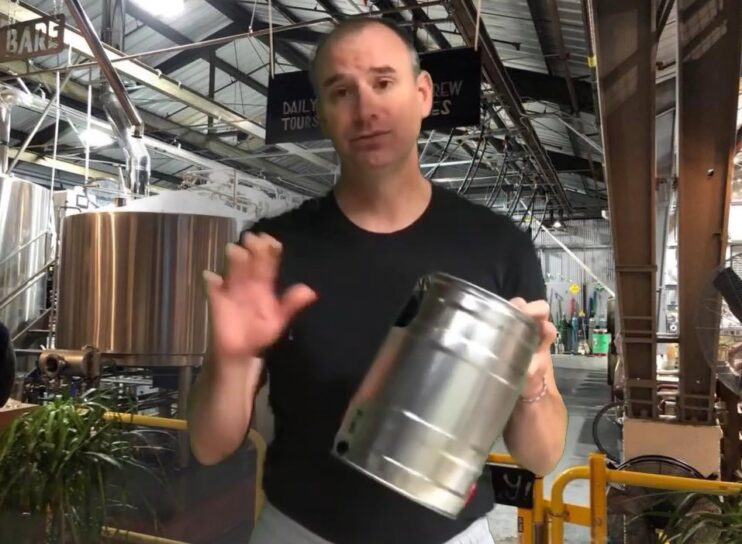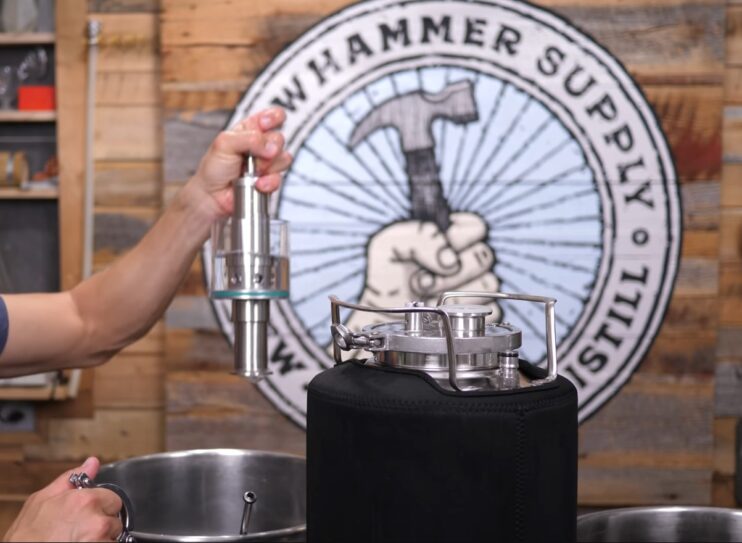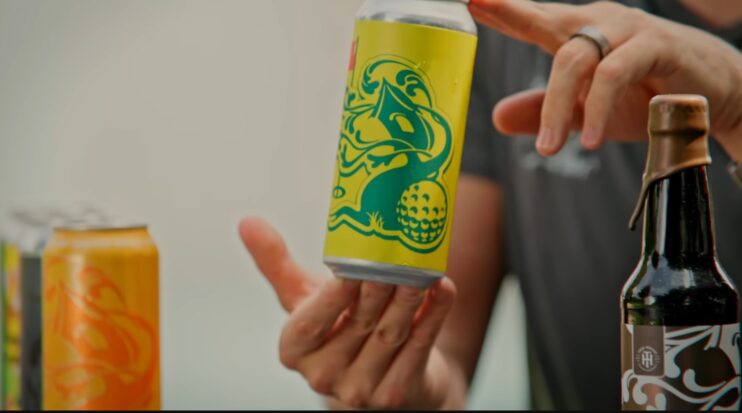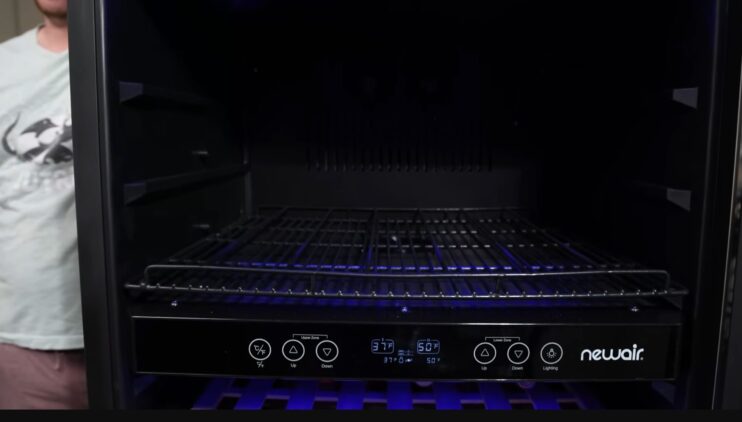Beer, one of the oldest and most widely consumed alcoholic beverages, has a varied shelf life that depends on several factors. These include the type, the packaging, and how it’s stored. Understanding these elements can help you enjoy your favorite drink at its best quality.
Crucial Factors That Are Affecting the Shelf Life

- Type: Ales and lagers have different shelf lives. Generally, higher-alcohol and darker beers last longer.
- Packaging: Cans tend to protect beer from light and oxygen better than bottles, potentially extending its shelf life.
- Storage Conditions: Beverage kept in a cool, dark place will last longer than beer exposed to heat and light.
General Guidelines
- Standard Lagers and Ales: These typically last between four to six months when stored properly.
- IPAs and Hoppy: Best consumed within three months to preserve the hop flavors that can fade over time.
- High-Alcohol: Flavors like barleywines or imperial stouts can last for years and may even improve with age.
How to Recognize Signs Of Agins?
- Color Changes: It may darken as it oxidizes.
- Flavor Changes: Oxidation can lead to stale, cardboard-like flavors.
- Carbonation Loss: Older one may lose its fizz, impacting mouthfeel and overall enjoyment.
Why You Should Never Drink Expired Beer?
Drinking expired beer is not recommended as it can lead to an unpleasant sensory experience. Over time, it can undergo chemical changes that affect its taste, aroma, and mouthfeel.
While it is not dangerous to drink, the degradation of these qualities can result in flavors that are often described as musty, stale, or cardboard-like. The hop compounds that impart bitterness and aroma to beer, especially in hop-forward styles like IPAs, are particularly volatile and tend to deteriorate first.
This means that the vibrant, fresh taste that the brewer intended can be lost, leaving you with a drink that is a shadow of its former self. The presence of new by-products from the breakdown of ingredients can lead to increased flatulence or an upset stomach in some individuals.
Best Practices for Extend Duration and Quality
- Consistent Temperature: Store it at a steady, cool temperature away from direct sunlight.
- Upright Storage: Keeping it upright minimizes oxidation and contamination from the cap.
- Proper Sealing: Ensure that it is sealed tightly after opening if not consumed in one sitting.
Can You Extend Beer’s Lifespan?

The enthusiasts often seek ways to preserve their favorite brews for as long as possible without sacrificing quality. While it isn’t meant to last indefinitely, certain strategies can significantly prolong its shelf life.
Optimal Storage Conditions
- Temperature Control: Consistently cool temperatures slow down the aging process.
- Light Management: Exposure to light, especially sunlight, can degrade quality rapidly.
- Humidity Considerations: Moderate humidity helps prevent the drying out of corks in bottle-conditioned beers.
Proper Packaging
- Cans Over Bottles: Cans provide better protection against light and oxygen.
- Dark Glass Bottles: If bottles are preferred, dark glass offers more defense against light.
- Kegs for Bulk Storage: For larger quantities, kegs can be an efficient way to extend beer’s life, especially when coupled with proper kegerator storage. A growler can also be a great solution.
Handling and Care
- Upright Storage: Storing it upright minimizes the surface area exposed to air and potential contamination.
- Seal Integrity: Ensuring that the seal is uncompromised is crucial to prevent oxygen ingress.
Advanced Solutions
- Oxygen Absorbers: Some modern caps come with oxygen absorbers to reduce oxidation in bottles.
- Nitrogen Flushing: This process displaces oxygen in cans and bottles, slowing down the aging process.
Best Practices For Preserving Beer For a Longer Time

Maintaining the quality over time is as much an art as it is a science. The following best practices can help maintain the beer’s character and flavor for as long as possible.
Refrigeration
- Consistent Chilling: Keeping it at a stable, cold temperature is essential for slowing down the degradation process.
- Avoiding Temperature Fluctuations: Fluctuations can cause it to age prematurely and can affect carbonation levels.
Reduction of Light and Air Exposure
- Avoiding Sunlight: UV rays can cause chemical reactions, leading to off-flavors.
- Tight Sealing: Properly sealed bottle prevents oxygen from entering and staling the beer.
Cellars for Beer Collectors
- Controlled Environment: A dedicated cellar or fridge can provide the ideal conditions for aging.
- Inventory Rotation: Regularly check and consume older stock to ensure it’s enjoyed at its best.
Improve the Experience With the Right Approach
To get the most out of your beer, it’s not just about how long it lasts but how you serve and enjoy it. The right practices can enhance your experience significantly.
Serving at the Right Temperature

- Light Lagers and Pilsners: Serve these between 38-45°F to highlight their crispness.
- Ales, IPAs, and Stouts: Best enjoyed at slightly warmer temperatures, around 45-55°F, to allow the flavors to unfold.
Pairing with Food
- Complementing Flavors: Match the intensity of your beer with your food. A robust stout pairs well with hearty meats, while a light lager complements delicate fish.
- Contrasting Tastes: Use it to balance the meal, like a tart with a sweet dessert.
Even a Glass Can Make a Difference
- Shape: The shape of the glass can influence the release of aromas and the formation of the head.
- Cleanliness: A clean glass free of residues ensures that the beer’s flavor is not compromised.
Explore the Market to Find the Favorite Taste
The market offers an array of tastes, from the bitter notes of IPAs to the rich, malty essence of stouts. For the adventurous drinker, local craft breweries often provide a tasting room experience where one can sample various styles. Moreover, festivals and tasting events are excellent venues to explore different flavors and learn directly from brewers about the unique profiles and brewing processes. Here are the most popular types.
| Type | Characteristics | Alcohol By Volume (ABV) Range | Average Lifespan |
|---|---|---|---|
| Lager | Crisp, clean, and refreshing; often has a smooth finish. | 4-6% | 4-6 months |
| Ale | Fruity and full-bodied with a more pronounced malt flavor. | 4-7% | 6-9 months |
| IPA (India Pale Ale) | Notably hoppy and bitter; can have floral, fruity, or citrusy notes. | 5.5-7.5% | 3-6 months |
| Stout | Dark, with flavors of coffee, chocolate, and roasted malt. | 4-12% | 6-12 months, can be years for imperial stouts |
| Porter | Rich and dark with complex flavors; often has notes of chocolate, caramel, and nuts. | 4-6% | 6-12 months |
| Wheat | Light and hazy with a slight spice and citrus flavor; often refreshing. | 3-5.5% | 3-6 months |
| Sour Ale | Tart and tangy, ranging from lightly sour to intensely puckering. | 4-8% | Can last several years |
| Pilsner | A type of lager with a more pronounced hop flavor; crisp and refreshing. | 4-6% | 4-6 months |
| Belgian Ale | Often sweet and fruity with a high alcohol content and spicy notes. | 6-12% | 6-18 months, some can age for years |
| Barleywine | Very high in alcohol with a strong, robust malt character and significant sweetness. | 8-12% | Can age for decades |
FAQs
Can the storage location affect the taste of beer even within its best before date?
Yes, the storage location can significantly impact the taste. Even if a beer is consumed before its best before date, storing it in a warm place or where it is exposed to direct sunlight can accelerate aging processes and spoil the flavor. It’s best to store beer in a cool, dark place to maintain its intended taste.
Is there any risk of food poisoning from drinking beer that’s past its expiration date?
Beer is not known to become toxic or cause food poisoning after its expiration date due to its alcohol content and hops, which are natural preservatives. However, the taste will likely be off, and it may cause mild stomach discomfort due to the breakdown of ingredients over time.
How can I tell if a beer has gone bad without tasting it?
There are a few signs that can indicate a beer has gone bad: a sour or skunky smell, a change in color, or if the beer has become excessively cloudy. If the can or bottle is bulging or the beer gushes out upon opening, it’s also a sign that it may be spoiled.
Are there any beer styles that actually improve with age, beyond the best before date?
Certain styles, such as barleywines, imperial stouts, and some Belgian ales, can improve with age due to their high alcohol content and complex flavor profiles. These beers can develop deeper and more nuanced flavors over time, much like fine wines. However, this aging should be done under controlled conditions to avoid spoilage.
Last Words
The shelf life of beer is not a one-size-fits-all answer. It varies greatly and is influenced by multiple factors. By paying attention to the type of beer, its packaging, and how it is stored, you can ensure that you enjoy your beer in the best condition possible. Remember to serve it at the right temperature, pair it thoughtfully with food, and use the proper glassware to maximize your enjoyment.

